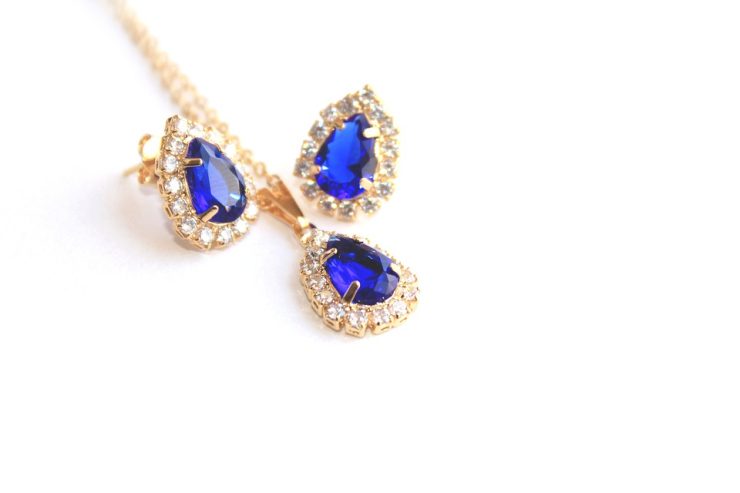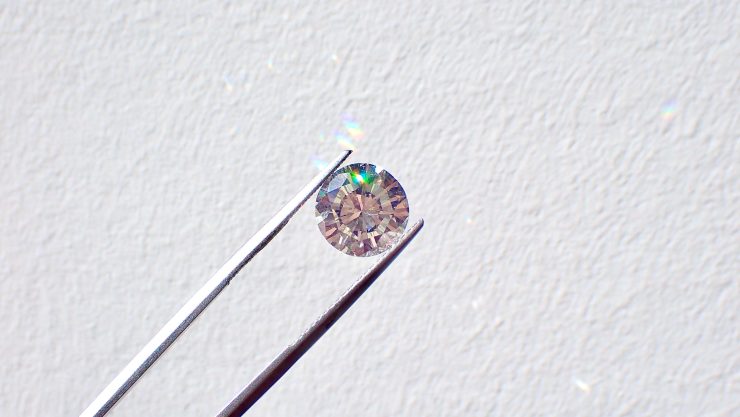The way a diamond is cut has evolved significantly over centuries, reflecting changes in both technology and aesthetic preferences. Antique cut diamonds typically refer to stones that were fashioned before the 20th century, using hand-cutting techniques and less advanced equipment. These cuts include styles such as the Old Mine Cut, Old European Cut, Rose Cut, and the Table Cut—each showcasing unique symmetry, facet patterns, and light performance that differ considerably from their modern counterparts. In contrast, new or modern cut diamonds are products of precise mechanical processes, allowing for extremely symmetrical facets that maximize brilliance and fire. The Round Brilliant Cut, developed in the early 20th century and refined through mathematical models by Marcel Tolkowsky, epitomizes modern cutting philosophy. Understanding these historical developments is essential for buyers and collectors, as each era’s cutting style affects a diamond’s visual appeal, rarity, and value proposition. Whether one appreciates the romantic charm of an antique cut or the high scintillation of a new cut, both styles reflect distinct periods in jewelry craftsmanship.

Antique Cut Diamonds: Characteristics and Visual Appeal
Antique cut diamonds are prized for their old-world charm and historical authenticity. Unlike modern cuts that prioritize maximum light return and sparkle, antique cuts often emphasize warmth, depth, and a softer glow—commonly referred to as a “candlelight” sparkle. This effect is a result of larger, chunkier facets and a high crown coupled with a small table. For instance, Old Mine Cut diamonds, prevalent in the 18th and 19th centuries, are known for their squarish shape with rounded corners and deep pavilion. Similarly, Old European Cuts—dominant from the late 1800s to early 1900s—are round in shape but feature a very high crown, small table, and open culet. These characteristics lend an unmistakable romantic and vintage allure to antique diamonds, making them highly sought after by collectors and enthusiasts of historical jewelry. Furthermore, each antique stone is usually cut by hand, making every piece slightly unique and imbued with artisanal character. This can appeal strongly to buyers who value individuality and craftsmanship over standardized brilliance.
New Cut Diamonds: Precision, Brilliance, and Popularity
Modern or new cut diamonds, especially those cut after the 1920s, represent the culmination of scientific understanding and technological precision in gem cutting. These diamonds are typically crafted using computer-aided design (CAD) and laser cutting technologies that ensure remarkable symmetry and accuracy. The result is a diamond that reflects light with maximum brilliance and fire—qualities that dominate contemporary consumer preferences. The Round Brilliant Cut, with 57 or 58 facets arranged in a mathematically optimized configuration, is the most popular new cut and serves as the standard for evaluating light performance. Other modern cuts such as the Princess, Radiant, and Cushion also follow a similar ethos of maximizing visual impact under electric lighting. Additionally, modern grading laboratories like GIA and AGS provide precise cut grade evaluations that help buyers understand how well a diamond performs optically. This level of standardization and predictability in quality is highly attractive to first-time buyers, who often seek sparkle, clarity, and assurance when making their first significant jewelry investment.
Rarity and Market Value: Collectibility vs. Commodity
The value of a diamond—whether antique or modern—is influenced by multiple factors including rarity, cut, clarity, carat weight, and provenance. Antique cut diamonds are often rarer in the market due to their age, historical significance, and the fact that fewer are being produced. Many of these diamonds come from sources that are no longer active or legal today, such as older South African mines, adding another layer of intrigue and scarcity. Consequently, well-preserved antique diamonds, especially those with original settings or verified historical provenance, can command significant premiums among collectors. On the other hand, modern cut diamonds are abundant due to mass production and widespread demand, particularly in engagement ring markets. While new cuts may not typically carry the same rarity value, their consistency and brilliance make them highly desirable, particularly in retail environments. For investors and collectors alike, antique cuts may present a more long-term store of value due to their uniqueness, while new cuts are often appreciated for their aesthetic perfection and market liquidity.
Ethical Considerations: Sustainability and Sourcing
The ethical implications of diamond purchasing have grown more important in recent years, influencing the choice between antique and modern cut stones. Antique diamonds, by virtue of their age, are considered a sustainable choice because they do not require new mining. This makes them appealing to environmentally conscious buyers who want to reduce their ecological footprint. Additionally, purchasing antique stones often contributes to the preservation of heritage jewelry, indirectly supporting craftsmanship and historical preservation. Modern diamonds, especially those sourced after the implementation of the Kimberley Process in 2003, can also be ethical if properly certified as conflict-free. Moreover, newer innovations such as lab-grown diamonds, which mimic the aesthetics of modern cuts, offer an even more sustainable alternative. However, for those prioritizing eco-consciousness and historical significance simultaneously, antique diamonds may provide the most compelling ethical profile. Whether a buyer leans toward an old cut or a new one, verifying ethical sourcing remains a key responsibility in the diamond acquisition process.

Restoration, Resizing, and Durability Concerns
One important consideration when purchasing antique cut diamonds is their condition and the implications of restoration or resizing. Many antique diamonds are set in original vintage or antique settings made from metals like platinum, rose gold, or silver, which may have become fragile over time. These pieces often require specialized restoration by jewelers experienced in working with historical pieces. Improper handling or resizing can compromise the structural integrity of the setting or even the stone itself, particularly if it contains inclusions or a large culet that increases the risk of chipping. New cut diamonds, by contrast, are typically set in modern mountings that are more structurally sound and easier to resize or modify. These settings are also designed to protect the stone better, with prong and bezel designs that accommodate high levels of daily wear. First-time buyers who prioritize durability and low maintenance may prefer new diamonds, while collectors are often willing to invest in careful preservation to retain the authenticity and charm of antique pieces.
Style and Aesthetic Compatibility with Modern Fashion
The style implications of choosing between antique and modern cut diamonds are often overlooked but should not be underestimated. Antique diamonds are ideally suited for vintage-inspired or one-of-a-kind engagement rings and heirloom-style jewelry. Their warm, soft glow complements antique and bohemian design elements, making them perfect for individuals with a taste for romantic or classical aesthetics. In contrast, modern cut diamonds typically exude a high-luster brilliance that pairs well with contemporary, minimalist, or high-glamour fashion styles. These diamonds are engineered to perform under electric lighting, making them especially radiant in social settings and everyday wear. Some jewelers offer hybrid styles that incorporate antique diamonds into modern mountings, appealing to those who want the best of both worlds. Understanding one’s personal aesthetic preferences—and how they may evolve over time—can be critical when selecting a diamond that not only retains value but also continues to resonate on a personal level.
Buyer Considerations: What to Know Before Purchasing
For both collectors and first-time buyers, making an informed decision requires more than just choosing between old and new—it demands a deep understanding of cut, certification, condition, and market intent. Collectors typically prioritize authenticity, rarity, and historical significance. When purchasing an antique diamond, they often look for original mountings, documentation of origin, and characteristics consistent with hand-cutting, such as asymmetry or an open culet. First-time buyers, on the other hand, often value standardization and assurance. For them, certification from reputable grading institutions like GIA or AGS is crucial. These documents provide a detailed analysis of cut quality, clarity, carat, and color—factors that heavily influence price and appearance. In many cases, the absence of a certificate for an antique stone is not a deal-breaker, but it does require additional due diligence. Buyers should also consider return policies, appraisals for insurance purposes, and long-term maintenance when choosing between these two distinct categories.
Trends and Future Outlook in the Diamond Market
Market trends indicate a growing appreciation for both antique and new cut diamonds, albeit for different reasons. The rising popularity of sustainable fashion and vintage aesthetics has fueled interest in antique diamonds, especially among younger consumers looking for ethical and unique engagement rings. Simultaneously, modern diamonds continue to dominate mainstream retail, bolstered by marketing, accessibility, and the rise of lab-grown alternatives that mimic new cuts. Auction houses, antique jewelry dealers, and bespoke designers are seeing increased demand for old cut diamonds, often with a preference for stones with clear provenance or notable history. As consumers become more educated and values-driven, the dichotomy between antique and modern may become less pronounced. Instead, buyers may begin to focus on storytelling, personalization, and environmental considerations, regardless of a diamond’s age. This shift suggests that both antique and new cut diamonds can coexist in a dynamic marketplace, offering diverse choices to suit a range of tastes and values.
Conclusion: Making the Right Choice for You
Choosing between an antique and a new cut diamond is not merely a stylistic or economic decision—it is also a personal journey that touches on heritage, ethics, and long-term satisfaction. Antique cut diamonds offer historical depth, uniqueness, and sustainable charm, appealing to those who value individuality and narrative. They require more careful consideration regarding condition and sourcing but reward buyers with character and legacy. New cut diamonds deliver unmatched brilliance, durability, and reliability, making them ideal for everyday wear and those seeking standardized quality. Both options carry distinct advantages, and the ideal choice often depends on the buyer’s priorities—whether it’s investment potential, aesthetic alignment, ethical concerns, or practical maintenance. For those with the resources and interest, exploring both options may even lead to a collection that spans the best of both worlds.